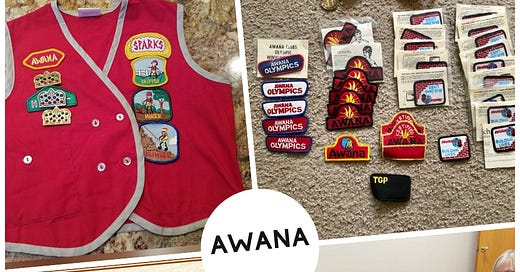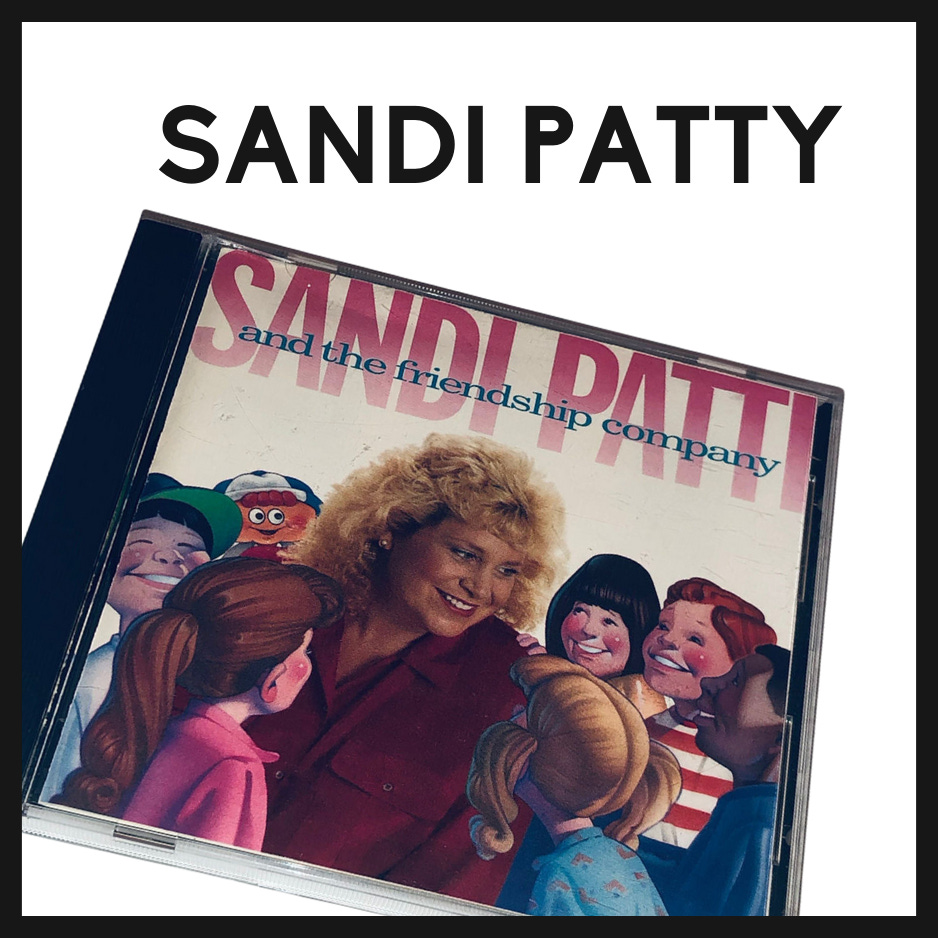GETTING SAVED
This is perhaps the most ubiquitous phrase in evangelical lingo, and there is a lot of foreign-sounding terminology necessary to understand this most central component of evangelicalism.
In the first half of this module, we will look at the basic statements of faith related to Getting Saved, essential vocabulary to help you learn the language as well as their (sometimes) hidden sentiments, three elements of evangelical/fundamentalist subculture, and three classic Christian music albums.
Feel free to leave any questions in the comments section!
STATEMENTS OF “FAITH”
Ask Jesus Christ to come into your heart to be your personal Lord and Savior. Emphasis is on personal because it’s all about you. Ignore that this is written nowhere in the Bible nor existed as a concept throughout the vast majority of Christian history.
It’s better (best?) to have a Very Dramatic conversion experience. Drugs. Sex. Rock and roll. Witchcraft. Devil worship. Public schools. Whatever provides the most entertainment. Be creative but (more or less) truthful.
The more altar calls the better. Make sure you’re really saved by recommitting your life to the Lord on a weekly basis.
You gotta get baptized, bro. Full immersion is the way to go.
Jesus was White. Ignore that he was from the Middle East with Levantine heritage. Also ignore how much he resembles Cesare Borgia from the Renaissance onward. Or a SoCal surfer from the 1960s onward.
Believe that God demanded the bloody and brutal death of Jesus, His own son, as payment for the sins that you have personally committed. Your little lies and greed and whatever else matter that much in the grand scheme of the Universe. Without that thoroughly financial exchange, you could never be forgiven by God and would burn in Hell for all eternity.
Number 6 above is known as penal substitutionary atonement. It is the ONLY way to understand the death and resurrection of Jesus Christ. Ignore that it is only about 800 years old in a 2,000-year-old religion.
Anyone who doesn’t believe the exact right things about Jesus, God, the Church, and various other theological points will burn in Hell forever. (You, of course, believe all of the exact right things.) Ignore that all of Jesus’ teachings in the Sermon on the Mount are about doing and being. Not about believing.
Faith healings are real. Ignore that most of these faith healers are total frauds.
There is no social aspect to the Gospel. Social justice is woke satanic communist fascist propaganda. Jesus was only talking about getting into Heaven after you die and absolutely nothing else.
Say that you believe in the teachings of Jesus but rarely if ever follow any of them. You might not actually know what those teachings are. But you must never admit that.
Do the exact opposite of what Jesus taught. Always.
The prosperity gospel is real and the only proper Western (correct) way to understand the work of Jesus Christ. If God favors you, wealth will follow. Especially financial wealth. If God does not favor you, you will be poor. His displeasure might also extend to your (poor) health.
ESSENTIAL VOCABULARY
SUBCULTURE AND POP CULTURE
WEE SING
Ah, Wee Sing. These songs were standard Christian fare at home, church, and (private religious) school throughout the 1980s and 1990s. And probably both before and after those decades too. Wee Sing Bible Songs included all the classics: Jesus Loves the Little Children, Jesus Wants Me for a Sunbeam, This Little Light of Mine, Deep and Wide, The B-I-B-L-E, Father Abraham, Zacchaeus, Kum Ba Yah, He’s Got the Whole World, and Peace Like a River. There are 63 songs listed on the Wee Sing Bible Songs playlist, and I probably had the majority of them memorized by the time I was 6 or 7. I listened to the cassette tapes regularly at home and sang a few of them every Sunday at children’s church. A lot of Gen X and Millennial adults who grew up in evangelicalism could probably sing a bunch of these from memory too.
The lyrics are generally not problematic compared to a lot of worship songs I was exposed to later on that were steeped in theological shame and fear. One major exception to this is I’m in the Lord’s Army.
I may never march in the infantry
Ride in the cavalry
Shoot the artillery
I may never shoot for the enemy
But I’m in the Lord’s army!I’m in the Lord’s army! (Yes, sir!)
I’m in the Lord’s army! (Yes, sir!)
I may never march in the infantry
Ride in the cavalry
Shoot the artillery
I may never shoot for the enemy
But I’m in the Lord’s army
Yikes. As you can see in the video above, there were also motions to go along with the lyrics. You know, to make war more fun! I took a couple Christian history classes in university, and I recalled this song specifically when learning about the pacifism of early Christians who refused to serve in the imperial army. The religion went from non-violent and anti-imperialist to teaching kids fun songs about being in the Lord’s (modern) army while celebrating life in the American Empire. What a mindfuck.
FLANNEL GRAPHS
Unless you went to a fairly large church back in the day, there probably wasn’t a huge budget for things like TVs, VCRs, and VHS tapes. And if you lived out in the boonies like I did, there were no Radio Shacks nearby. Sunday School made do with something else: the flannel graph. Nowadays, children’s pastors probably pop in a VeggieTales DVD or pull up a YouTube video. But in the ‘80s? No, we had flannel.
Flannel graphs were brightly colored to capture kids’ attention, and depending on the storytelling abilities of the Sunday School teacher, they could keep the kids’ attention for a good chunk of time. Flannel graphs were literally just pieces of flannel that stuck to other pieces of flannel which told (the G-rated) Bible stories. We didn’t even have video games back then, so I thought these were absolutely brilliant. It was like storyboarding in screenwriting except the stories were already written.
And the best part? Getting to create original Bible stories with them during free play after instruction time was over. That’s when I would mix up all the characters and create my own narratives. Jesus and the Burning Bush? Why not. King David in the Garden of Eden? Interesting. Angels on Noah’s Ark? Let’s see what happens.
AWANA
I never actually took part in any Awana programs, but it was a very common mid-week event at my church. I could have gone when I was in elementary school, but I just never had any interest in it. If I were feeling generous, I would describe it as a child discipleship program. If I weren’t, I would describe it as a child indoctrination program. I vaguely remember kids wearing vests with patches they had earned through memorizing Bible verses and other stuff like that. It seems to have been modelled off Boy Scouts and Girl Scouts in that regard. Typical activities were small group Bible study discussions, reciting memorized Bible verses, games, and some arts and crafts type stuff.
Since I never took part in Awana, I only recently discovered that it’s an acronym for Approved Workmen Are Not Ashamed. (Big cult energy.) Prior to a major redesign a couple decades ago, Awana also used a ton of Native American cultural appropriation in its material. Their age groupings are broken down like this:
Puggles: age 2–3
Cubbies: preschoolers
Sparks: kindergarten to 2nd grade
Truth and Training/T&T: 3rd grade to 6th grade
Trek: middle school
Journey: high school
Putting kids as young as age 2 into any kind of Bible study program seems pretty sus to me. I’ve taught kids that young in a non-religious setting; pop in a Wee Sing if you must and call it a day. I also really don’t like the Truth and Training level name. It’s giving major indoctrination vibes, like WE HAVE THE TRUTH AND WE ARE GOING TO TRAIN YOU IN IT OR ELSE.
After watching this discussion by Ex-Fundie Diaries, I’m really glad I was never exposed to their material. There were a lot of other problematic things that I encountered, but I think I dodged several bullets by not starting mid-week church stuff until middle school.
CCM
SANDI PATTY: SANDI PATTI AND THE FRIENDSHIP COMPANY (1989)
This entire album is pure, high-quality late ’80s cringe. And I loved it. I had this CD on repeat for years. At just under 40 minutes, the album is packed with schmaltzy pop music made for kids. A children’s choir, some scripted conversations, and a few duets are included to really round out the experience. This was definitely a major step up from the Wee Sing series in the musical talent and songwriting sophistication departments. It’s also nice to see regular singers creating entire albums for younger kids. Sandi Patty was already an established Christian singer at this point in her career, so she probably created this project because she’s got a soft spot for kids. And while it is absolutely a Christian album, the lyrics aren’t overly preachy and the scripted bits were pretty relatable for children at that time.
AMY GRANT: AGE TO AGE (1982)
Age to Age is the first real album I ever listened to. (Wee Sing and Sandi Patty don’t count.) I think I borrowed the cassette tape from my sister’s room and never returned it. Released in 1982, the album has a very late ‘70s/early ’80s feel to it. The most lastingly popular song has probably been El-Shaddai which includes a bunch of lyrics in Hebrew.
CHORUS
El-Shaddai, El-Shaddai, El-Elyon na Adonai
Age to age You’re still the same
By the power of the name
El-Shaddai, El-Shaddai, Erkahmka na Adonai
We will praise and lift You high, El-ShaddaiVERSE 1
Through Your love and through the ram
You saved the son of Abraham
Through the power of Your hand
Turned the sea into dry land
To the outcast on her knees
You were the God who really sees
And by Your might
You set Your children freeVERSE 2
Through the years You made it clear
That the time of Christ was near
Though the people couldn’t see
What Messiah ought to be
Though Your Word contained the plan
They just would not understand
Your most awesome work was done
Through the frailty of Your Son
Evangelicals often have this weird fetish with mixing elements of the Hebrew language and both Jewish and Israeli culture into their flavor of Christianity. It was around the late 1970s when this really started gathering steam with groups like Jews for Jesus and anything affiliated with Christian Zionism. End Times theology was becoming hugely popular, and both Israel and anything Jewish played a big role in these (completely made-up) evangelical beliefs. It was very en vogue at the time to add a bunch of Hebrew lyrics or Jewish-sounding melodies into Christian music. This has continued on through today with things like blowing a shofar (ram’s horn) at Christian (and Christian-adjacent) events. For example, evangelicals brought shofars to the insurrection at the US Capitol on 06 January 2021.
KEITH GREEN: NO COMPROMISE (1978)
I don’t think I ever actually listened to this album as a kid, but I do remember the album cover. I’m not really sure what’s going on with the cover art here, but it looks to be heavily inspired by Monty Python. (And I like this very much.) Keith Green was a pioneer of the Jesus Music genre that was just blossoming in the 1970s. I’m pretty sure my parents had the old-timey record lying around rather than the CD or even the cassette tape. Keith Green was a little before my time, but I listened to some of the tracks while doing research for this article. It’s actually a pretty rocking album. Late ’70s pop is always a good choice, even if it is Christian music. The consensus is that this is his best album, and it does have a few bangers on it. It also isn’t overly preachy like a lot of later CCM (contemporary Christian music) eventually became.
WRAPPING UP
That’s it for the first half of the first module on Christianese! We’ll wrap up Getting Saved next class with some original source reading material, a music video, and a movie trailer. Then we’ll move on to the final quiz and a certificate of completion.
By the end of Getting Saved, you should have reached a level A1 in Christianese. This means you will be able to:
✔ understand common expressions
✔ use simple phrases
✔ communicate in a simple way
✔ follow basic Christianese














